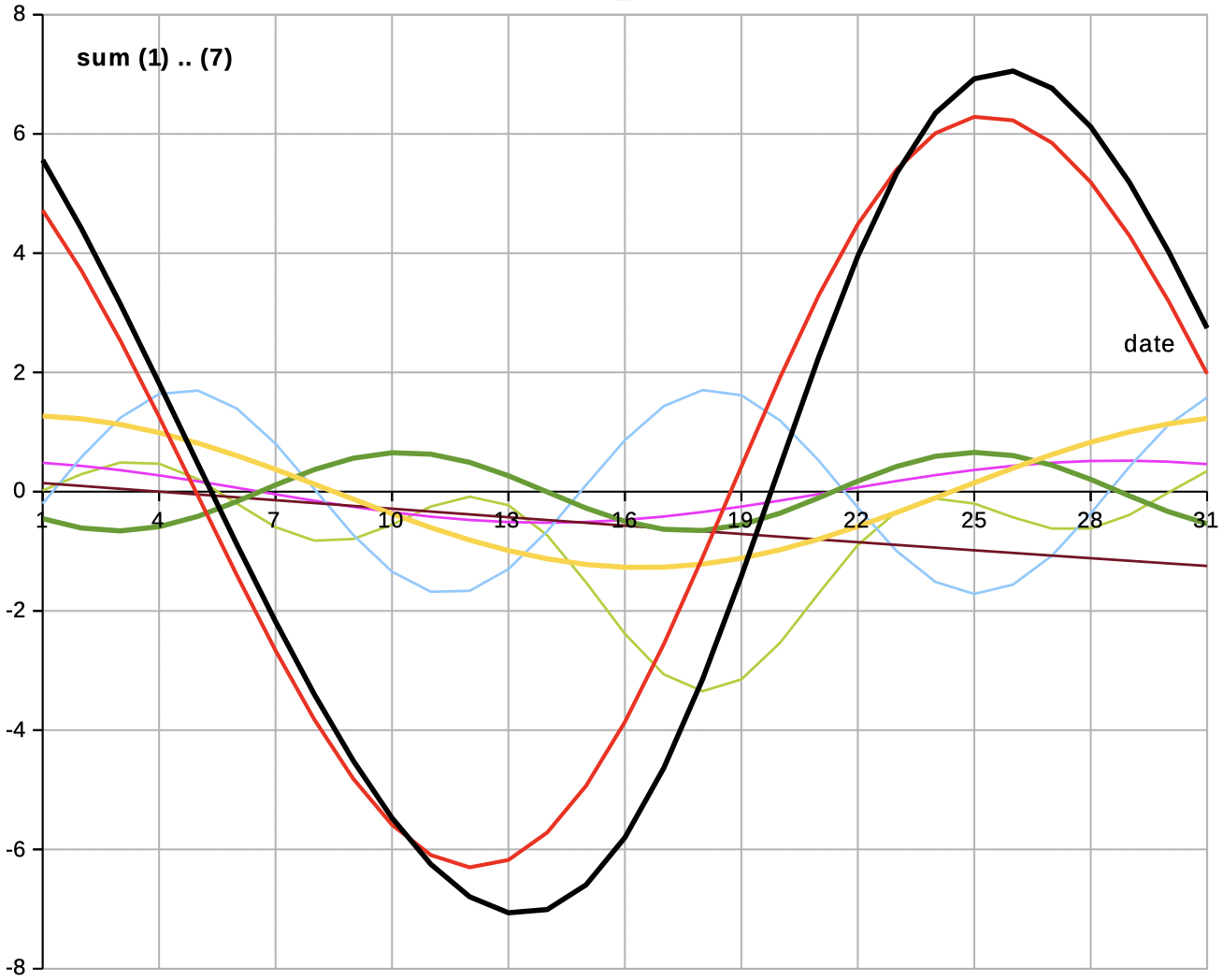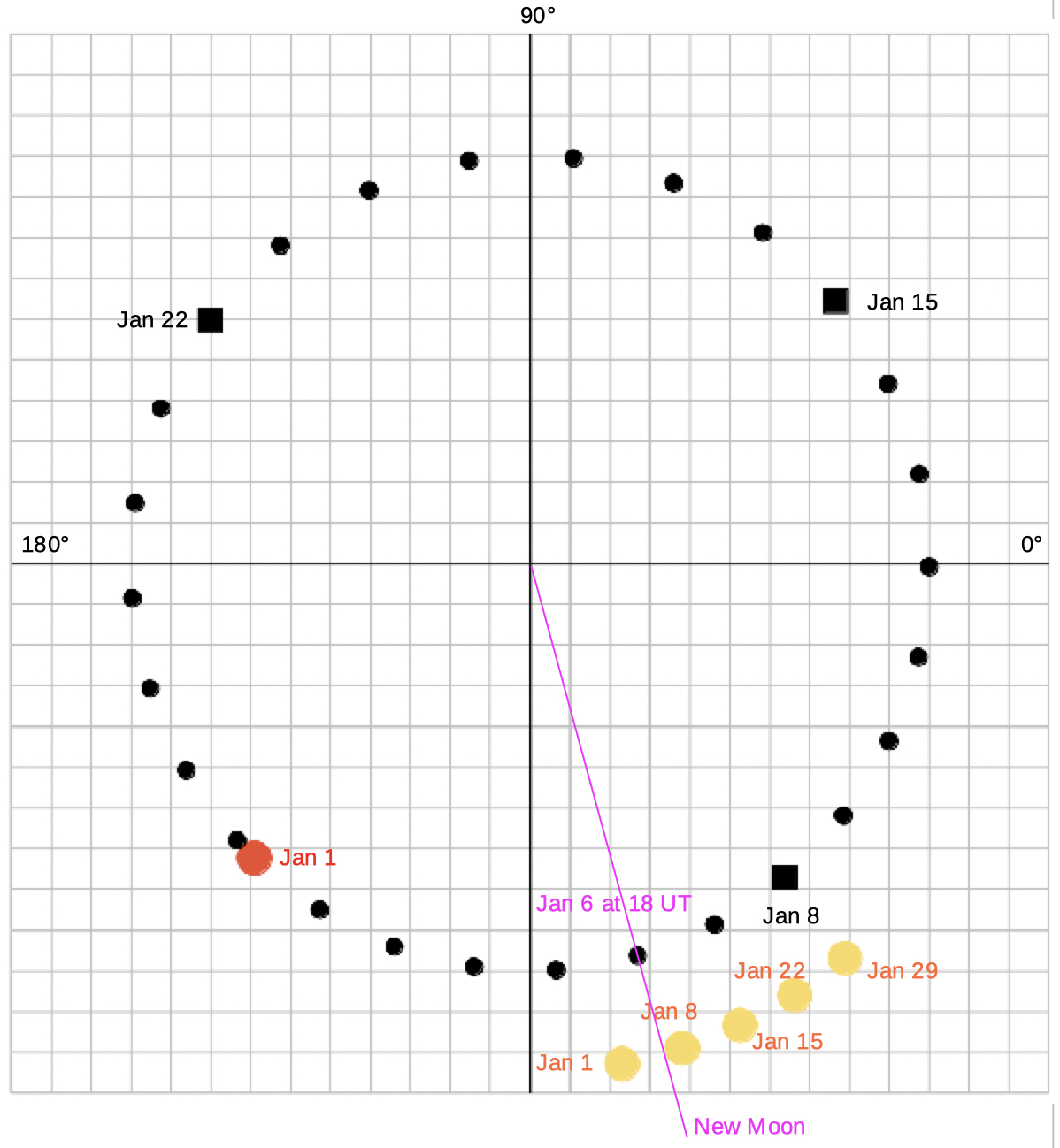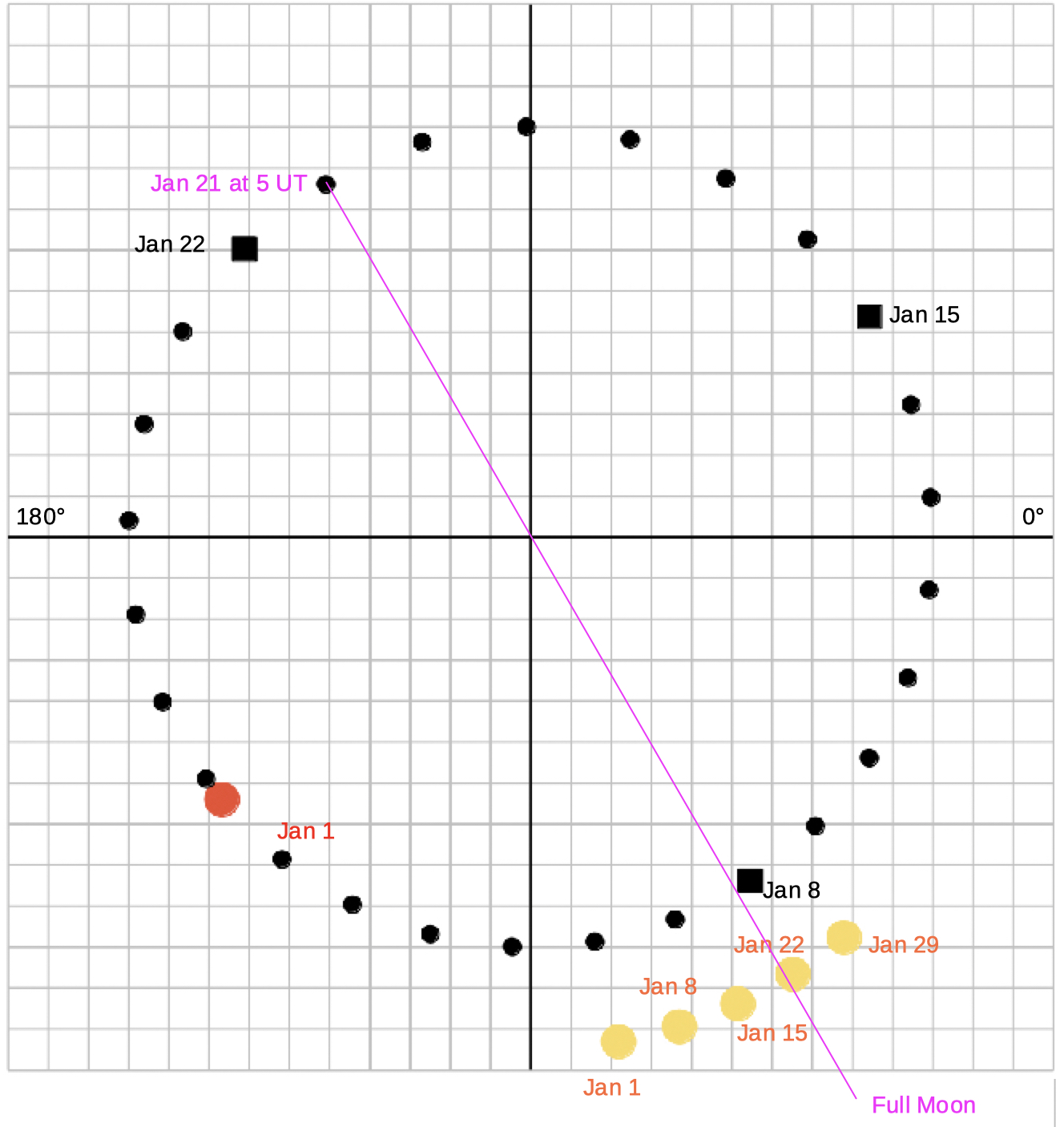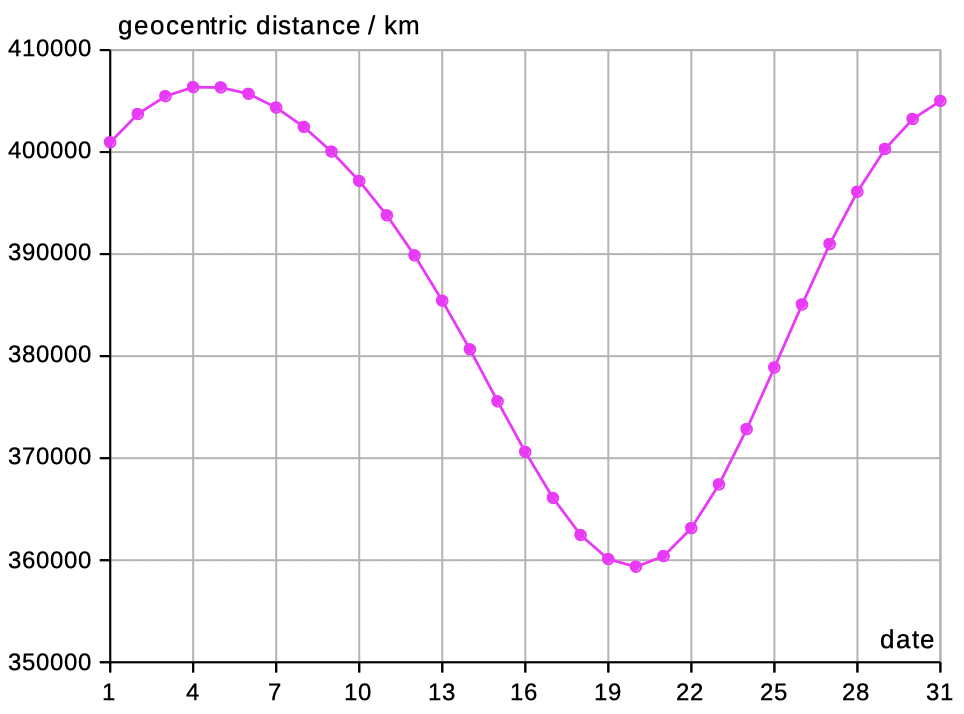|
|
GeoAstro Applets |
Astronomy |
Chaos Game |
Java |
Miscel- laneous |
Computing the true longitude of the Moon:
True longitude of Moon = mean longitude + major inequality + evection + variation + annual inequality + reduction to ecliptic + parallactic inequality + more terms
mean longitude of the Moon: L0 = 218.31617 + 481267.88088*T -
4.06*T*T/3600 the Moon's mean anomaly: M = 134.96292 + 477198.86753*T +
33.25*T*T/3600 the Sun's mean anomaly: MSun = 357.52543 + 35999.04944*T -
0.58*T*T/3600 the mean distance of the Moon from the
ascending node F = 93.27283 + 483202.01873*T -
11.56*T*T/3600 the difference between the mean longitudes of
the Sun and the Moon D = 297.85027 + 445267.11135*T -
5.15*T*T/3600 Time T = (JD - 2451545)/36525
Period
measured from the mean position of the perigee
~27.32 d
~27.55 d
365.25 d
~27.21 d
~29.53 d
Source: Montenbruck, Pfleger: Astronomy on the Personal Computer
True longitude of Moon = mean longitude + major inequality + evection + variation + annual inequality + reduction to ecliptic + parallactic inequality + more terms
L = L0 + (1) + (2) + (3) + (4) + (5) + (6) + (7)
(1) Major Inequality (equation of center)
= 22640"*sin(M) + 769*sin(2M) (2) Evection = -4586"*sin(M-2D) (3) Variation = 2370"*sin(2D) (4) Annual Inequality = -668"*sin(MSun) (5) Reduction to the Ecliptic = -412"*sin(2F) (6) Parallactic Inequality = -125"*sin(D) term2 term3 term4 term4 term5 term6 = -212"*sin(2*M-2D) = -206"*sin(M+MSun-2D) = +192"*sin(M+2D) = -165"*sin(MSun-2D) = +148"*sin(L-MSun) = -110"*Math.sin(M+MSun) = - 55"*Math.sin(2F-2D)
(7) More terms
term1
*****


*****
Example: 2000 Jan at 00:00 UT
Drawing
the diagram the small terms (4) to (7) are multiplied by 15.

The error of the true longitude (L = L0 + sum) is (0.52 ± 0.25)°,
reference HORIZONS Web-Interface (NASA JPL).
*****
The red circle is the position of the Moon on the first day of the month (2000 Jan 1 at 00:00 UT).
The position of the Sun is added. The motion is counterclockwise:

The relative positions of the Sun and the Moon are causing the phases of the Moon.
In 2000 Jan, New Moon occured on Jan 6 at 18 UT:

In 2000 Jan, Full Moon occurred on Jan 21 at 5 UT:

*****
| Draconic month time between the Moon’s passages through the same node, or intersection of its orbit with the ecliptic. |
27.21 d |
| Sidereal month time needed for the Moon to return to the same place against the background of the stars. |
27.32 d |
| Anomalistic month time from perigee to perigee |
27.55 d |
| Synodic month time of complete cycle of phases of the Moon |
29.53 d |
*****
The geocentric distance of the Moon is computed by Meeus (Astronomical Algorithms, Table 45.A, 46 trigonometric terms):

The mean absolute error (Jan 2000, 0 UT) is (33 ± 25) km,
reference: MICA
More accurate values are computed by my spreadsheet
moon_month
| Download my LibreOffice
spreadsheet: moon_mov_month.ods |
Apache OpenOffice (4.1.6) and Microsoft Excel for Mac (16.16.10)
are showing an error computing the distance of the Moon
(formula overflow, Err:512)
a
***

|
E |
The eccentric anomaly (a parameterization of polar angle) |
|
ν |
The true anomaly specifies the position along the orbit. |
|
M |
The mean anomaly is the angle of the line joining the focus (Earth) to a hypothetical body that has the same orbital period but travels at a uniform angular speed: M = n·(t - T) |
Kepler's Equation for a body orbiting on an ellipse with eccentricity e:
M = E - e·sin(E)
More details:
|
|
Last update: 2019 May 31
![]()